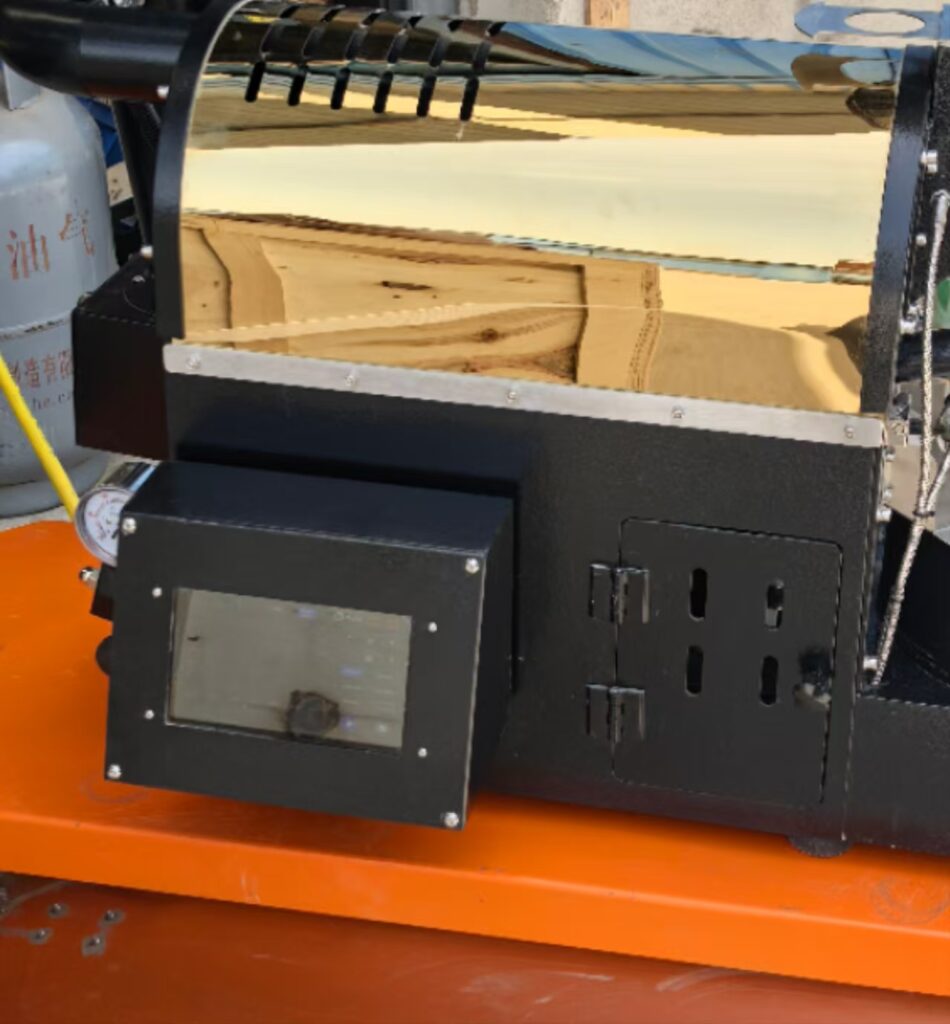Pairing Coffee Roasters with Coffee Beans: Maximizing Flavor Potential Through Equipment Synergy
The interaction between coffee roasting machines and bean characteristics is pivotal in determining final cup quality. Factors like bean density, moisture content, and origin profiles influence how roasters should be configured, while machine design dictates which beans achieve optimal results. Below, we explore how to align roasting equipment with bean traits for nuanced flavor development.
Understanding Bean Characteristics and Roaster Compatibility
Density and Moisture Content
High-density beans, often grown at high altitudes (e.g., Ethiopian Yirgacheffe or Colombian Supremo), require precise heat management. These beans conduct heat slowly, necessitating gradual temperature increases to avoid uneven roasting. Drum roasters with adjustable drum speeds excel here, as slower rotation ensures even heat penetration without scorching. Conversely, low-density beans (e.g., Robusta or some naturals) absorb heat rapidly and may benefit from hot-air systems with rapid temperature adjustments to prevent over-roasting.
Moisture content also plays a role. Freshly harvested beans with higher moisture (10–12%) need longer drying phases. Roasters with extended preheat cycles or dual-heating mechanisms (e.g., hybrid convection-conduction) can gently remove moisture before transitioning to developmental stages. Beans with lower moisture (8–10%) require shorter drying times to preserve acidity.
Origin and Processing Methods
- African Beans: Known for floral and citrus notes, these beans thrive in roasters that emphasize gentle heat application. Fluid-bed or semi-hot-air systems with moderate airflow preserve delicate aromatics while avoiding bitterness.
- Central/South American Beans: Often balanced with nutty or caramel sweetness, these beans adapt well to drum roasters. The conduction-heavy environment enhances body and sweetness, making them ideal for medium roasts.
- Asian Beans: Earthy and herbal profiles (e.g., Indonesian Sumatras) benefit from roasters that allow extended development times. Drum machines with adjustable exhaust systems can highlight their complexity without masking regional nuances.
Processed beans (washed, natural, honey) also influence roaster choice. Naturals, with their sticky mucilage, require careful airflow control to prevent uneven drying, while washed beans tolerate higher heat early in the roast.
Roaster Types and Their Ideal Bean Profiles
Drum Roasters: Depth and Body
Drum machines excel with beans that benefit from prolonged heat exposure. Their conduction-based design enhances Maillard reactions, making them suitable for:
- Dark Roasts: Beans like Brazilian Santos or Guatemalan Antigua develop rich, chocolatey notes when roasted in drums. The extended contact time caramelizes sugars effectively.
- Medium Roasts: For beans aiming for balance (e.g., Costa Rican Tarrazu), drum roasters highlight sweetness while maintaining acidity.
However, drum roasters may struggle with delicate or low-density beans if not calibrated correctly. Overheating can mute floral notes or induce bitterness.
Hot-Air/Fluid-Bed Roasters: Clarity and Acidity
These roasters use forced hot air to suspend beans, ensuring rapid and even heat transfer. They are ideal for:
- Light Roasts: High-altitude Arabicas (e.g., Kenyan AA) retain their bright acidity and fruity undertones when roasted in fluid-bed systems. The quick heat application prevents overdevelopment.
- Experimentals: Beans with unique processing (e.g., anaerobic fermentation) benefit from the precision of hot-air roasters, which preserve volatile compounds.
Yet, hot-air systems may lack the body needed for espresso blends, as they prioritize aromatic clarity over caramelization.
Hybrid Roasters: Versatility
Combining drum conduction and hot-air convection, hybrid machines offer flexibility:
- Medium-Dark Roasts: Beans like Honduran Marcala gain complexity, with hybrid roasters balancing body from the drum and acidity from airflow.
- Micro-Lot Specialty Beans: For rare or small-batch beans, hybrids allow roasters to tailor profiles dynamically, adjusting conduction and convection mid-roast.
Operational Adjustments for Bean-Specific Roasting
Temperature Profiling
- High-Altitude Beans: Start with a lower charge temperature (e.g., 180°C) and increase gradually to preserve acidity.
- Low-Altitude/Robusta Beans: Begin at a higher temperature (e.g., 200°C) to penetrate dense structures quickly.
Airflow Management
- Delicate Beans: Reduce airflow in the early stages to prevent moisture loss, then increase post-first crack to highlight aromatics.
- Dense Beans: Maintain steady airflow throughout to ensure even heat distribution.
Drum Speed and Batch Size
- Small Batches: Increase drum speed to prevent beans from sticking to the walls in drum roasters.
- Large Batches: Reduce speed in hybrids to avoid chaff buildup and ensure consistent tumbling.
Roast Development Timing
- Floral/Fruity Profiles: Shorten the drying phase and extend the development phase by 10–15% to emphasize sweetness.
- Earthy/Spicy Profiles: Prolong the Maillard stage to deepen flavor complexity.
Pairing coffee roasters with bean characteristics requires a nuanced understanding of heat dynamics, origin traits, and processing methods. By aligning roaster type with bean density, moisture, and flavor goals, roasters can unlock the full potential of each coffee, creating cups that highlight regional identity and processing innovation. Mastery lies in adapting operational parameters to the unique demands of each bean, ensuring consistency and excellence across batches.


